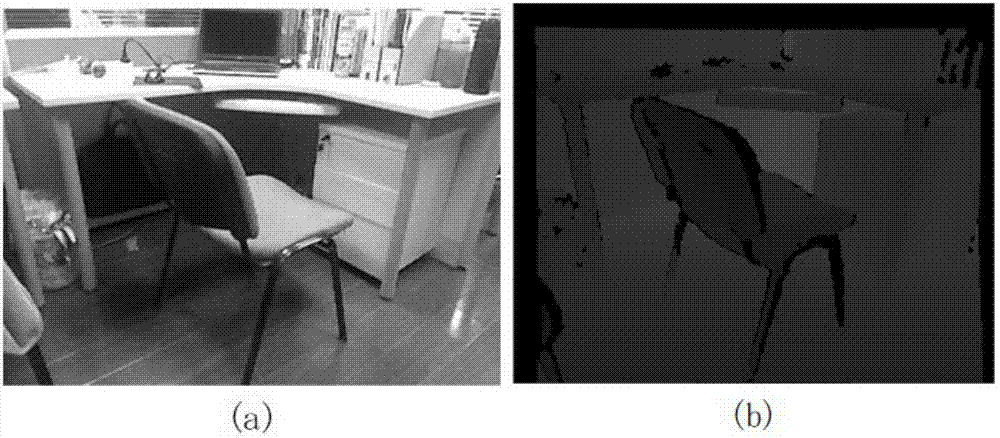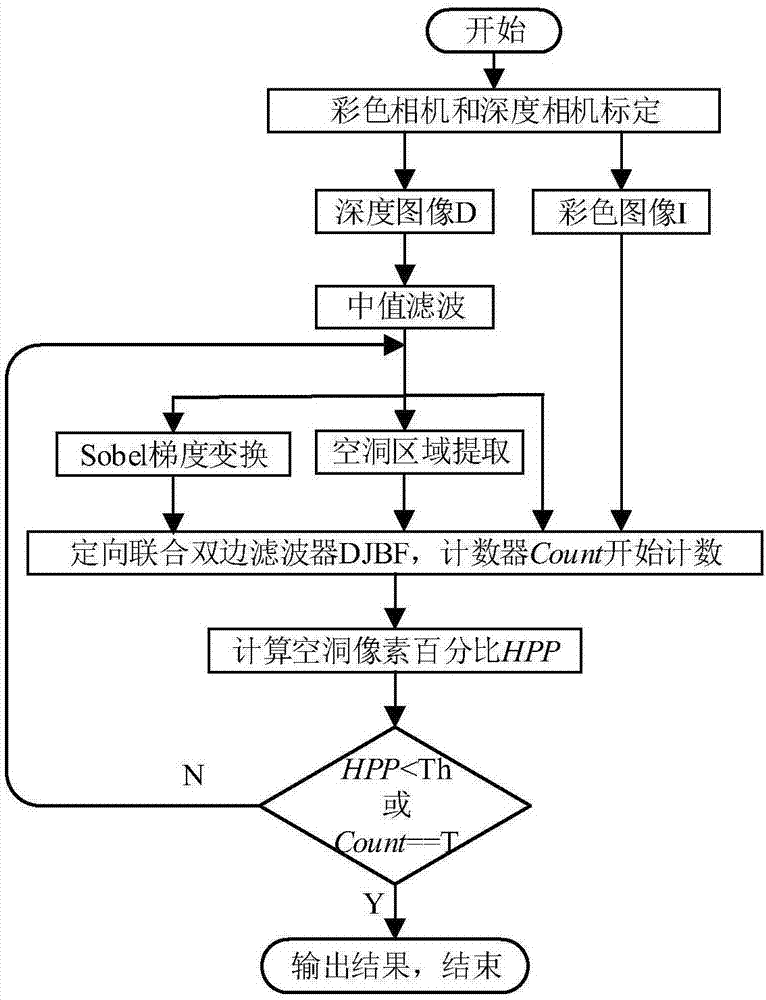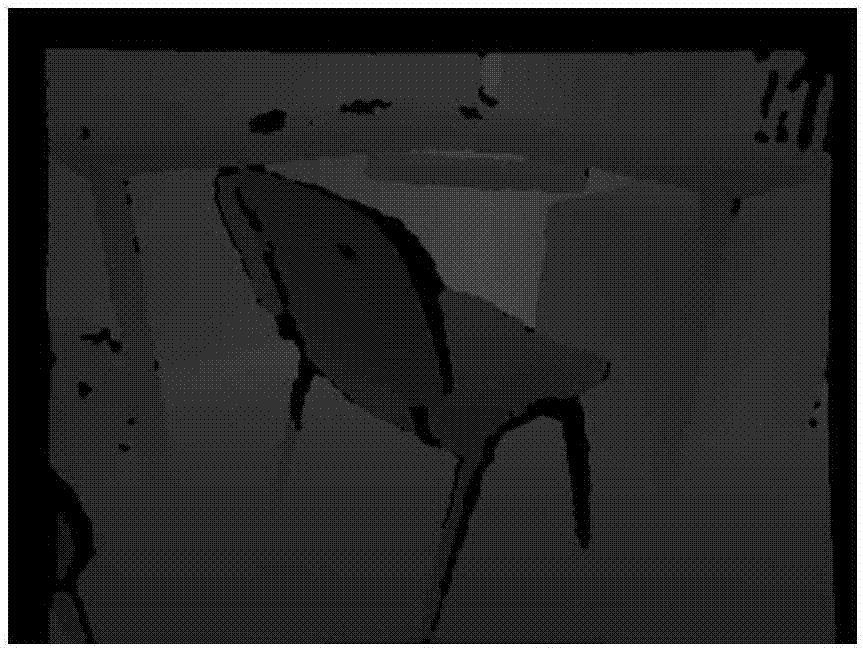Boundary feature preserved depth image enhancement method
A depth image and boundary feature technology, applied in image enhancement, image analysis, image data processing, etc., can solve the problems of inaccurate depth value filling in holes, poor edge retention characteristics of objects, inaccurate depth filling, etc., and achieve boundary preservation Feature integrity, feature integrity, and the effect of avoiding blurring of non-void areas
- Summary
- Abstract
- Description
- Claims
- Application Information
AI Technical Summary
Problems solved by technology
Method used
Image
Examples
Embodiment Construction
[0056] In order to better illustrate the purpose and advantages of the present invention, the specific implementation manners of the present invention will be described below in conjunction with the accompanying drawings and examples.
[0057] A depth image enhancement method that preserves object boundary features disclosed in this embodiment, the specific implementation steps are as follows:
[0058] Step 1: Calibrate the color camera and the depth sensor respectively, and obtain a color-depth image group corresponding to pixels at the same row and column position in the color image and the depth image.
[0059] Use the color image captured by the color camera and the depth image of the same scene acquired by the depth sensor to calibrate the color camera and depth camera, and obtain a color-depth image group corresponding to the same row and column position pixels in the color image and depth image.
[0060] The preferred Kinect sensor of the depth sensor, such as figure ...
PUM
 Login to View More
Login to View More Abstract
Description
Claims
Application Information
 Login to View More
Login to View More - R&D
- Intellectual Property
- Life Sciences
- Materials
- Tech Scout
- Unparalleled Data Quality
- Higher Quality Content
- 60% Fewer Hallucinations
Browse by: Latest US Patents, China's latest patents, Technical Efficacy Thesaurus, Application Domain, Technology Topic, Popular Technical Reports.
© 2025 PatSnap. All rights reserved.Legal|Privacy policy|Modern Slavery Act Transparency Statement|Sitemap|About US| Contact US: help@patsnap.com



